Genre: Action Developer: Novotrade Publisher: Sega Players: 1 Released: 1993
The Ecco series was ahead of its time, and I’d say that it’s still ahead of our time, even today. In 1992, when Sega was releasing some of its best titles, as well as inventing new genres of video games, Ecco the Dolphin was born – a dolphin simulator, in an ocean simulator, with different ecosystems to explore.
Some Genesis titles were downgraded into 8-bit versions, and released for Master System (in whatever countries that console was still surviving). In the U.S., the Master System was nonexistent, so those 8-bit titles were then ported onto Game Gear (marketed as the companion to the Genesis). Ecco the Dolphin met this fate, with a port on the Master System, which became a port on the Game Gear. Like most such titles, the big difference (from Master System) is that the Game Gear port is more zoomed-in, with its edges cropped – a change that generally made sense, for that jump from full-size TV to the small-screen. Like 8-bit Sonic, this means that the portable version is always showing slightly less screen-size, so the overall visibility of the stages is slightly less; however, the visibility is still fine, and Ecco swims at any speed we’d like, so it’s very manageable and playable.
For years, I’ve been swimming through the 16-bit simulated oceans on the Genesis and the Sega CD, plus the remarkable 32-bit version of Ecco for Windows (click here to read about Ecco PC: Fixed and Enhanced Edition). The 8-bit titles were the only part of the series that I had not yet explored, so just by their offer of some new content, I dived in. Once again, I found myself floating in Home Bay, that classic and slightly-confusing start of the series. I feel like I’ve been here a million times before, and it’s true – I have indeed been here a million times.
But Home Bay is different now. The drop to 8-bit is obvious, although I like how 8-bit graphics look on Game Gear (while 8-bit graphics on a TV can really show the blockiness of their pixels, the Game Gear’s small screen-size and low-resolution give its games a smoother look). The other most obvious differences, compared to the 16-bit original title, are the fewer colors and simpler backgrounds. Sega Genesis always showed us backgrounds of parallax scrolling, including underwater seascapes fading into the murky distance. The Master System and Game Gear are not quite up for that, so we have a solid backdrop of blue water, occasionally mixed with patches of darker or lighter water. The surface shows rippling waves, and there are familiar islands to see in the distance. The message-screens also have that nice animated background of water rippling (which somehow didn’t make it into the 32-bit Windows version of Ecco).
While the Game Gear can only display 32 on-screen colors, which is half the 64 on-screen colors possible from the Genesis and the Sega CD, the Game Gear is interesting for boasting a much-larger color palette, from which it can choose those fewer colors! At first, just swimming around, I noticed a few colors here and there, which seemed like they must have been added for Game Gear, because they seemed beyond the Master System’s palette. For example, the coral formations look extremely colorful, with splashes of pink, orange, and yellow. Later, I compared both 8-bit versions directly, and it turns out that the entire game’s colors were actually updated for Game Gear! This was not always the case for Master System-to-Game Gear ports, but this was the absolute best way of porting them, and the extra colors make portable Ecco far superior over the Master System version.
Starting with an extra SEGA logo screen, with extra whale calls, the title screen alone looks completely better on Game Gear, with deeper blue water, and blood-red letters, as we hear dolphins laughing and chattering (in both versions). Then in gameplay, everything looks updated: brighter blue water, prettier coral and plants, lighter-colored rocks and stage structures. The message screens show the same animated water rippling in both 8-bit versions, but here, some added colors make the effect look much better and more convincing. Even the health meter is a deeper red, and the air meter is a bluer blue. We can swim assured that the portable version looks completely better, throughout the whole adventure.
Both Master System and Game Gear versions share a couple updates over the 16-bit original. Some of the crystal Glyphs are gold, to show that they need to be tagged (and then they turn into classic-looking quartz, after being tagged). This is a welcome update, as the 16-bit (and 32-bit) versions usually show all the crystals as the same color. Another new touch is that there’s a sound effect to announce when Ecco has just entered a puzzle. It never needed a sound effect before, but it’s actually nice to know when it’s officially puzzle-time.
The controls are great, and it’s just like his old control scheme that we all know and love: Button 1 is his dash, 2 is gradual acceleration, and START is for sonar, which also serves as pause, because the sonar-view stays on-screen until we hit START again. The controls might feel vaguely, slightly more limited than we’re used to; however, the controls are almost exactly the same as on the Genesis/Sega CD! Some folks swear that the controls are broken, but I just don’t see it (or feel it)! The only limitation that’s really obvious is when Ecco explores the Arctic, and he glides across the ice; he can’t jump while he’s sliding… but he doesn’t need to, so it’s okay. And to give a sense of how effective the controls are, those famously-impossible jumps in Atlantis are easier here than in the 16-bit versions! If a person does perceive the controls as broken, then obviously his score would be much lower. This series really depends on tight controls, and thankfully, to me, the water feels fine!
Ecco is known for swimming fast, with gameplay speeds rivaling the Sonic series, and thankfully, his speed has survived his leap to 8-bit. The little screen scrolls by quickly and smoothly, showing all kinds of stage details and structures racing by. The graphics are remarkably clear, detailed, colorful, and fast. The only minor slow-down occurs when there are a few other creatures on-screen, but it’s minimal, and it clears up as soon as they leave the screen.
There’s the classic air meter, as dolphins are mammals just like us, so they must swim to the surface for air. And there’s the health meter, which is regenerated by eating fish. In effect, Ecco has unlimited life, as long as he manages to avoid taking too much damage at once and then heals himself by eating fish. It’s literally the circle of life. This series is just brilliant!
The music didn’t seem as great as I expected at first, but then I realized that if we hang around that very first limbo area, that song becomes a nice version of a theme from the 16-bit series. Next, Home Bay sounds surprisingly sad and melancholy right from the start, and Medusa Bay sounds like stress and chaos! The thing is, we’re supposed to hang around that first limbo area for a minute, and enjoy that song first because it balances out the following two heavier songs.
Home Bay has the same objective as in other versions (and I won’t say exactly what that goal is, in case anyone hasn’t played some version of Ecco yet!). The second stage, Medusa Bay, is where Ecco meets his orca friend. There’s a new puzzle which requires Ecco to push a block over some spiky plants, to destroy the spikes, and swim through. At least the developers are showing right away that there is new content thrown into the 8-bit ocean! The block also needs to be pushed over to trap a piranha into its cave and keep it from attacking, so there’s another new gameplay mechanic. All these little new parts do add up to a new experience, even though we’re going through an old, familiar adventure.
Thankfully, the third stage returns to more upbeat music as Ecco explores the Undercaves, and it’s nice because this stage’s difficulty gets balanced out by the pleasant music. Air is limited in the caves, there are those rock-eating starfish (to move around with sonar, to destroy a barrier), and there’s even an early cameo of that giant octopus, Eight Arms! (He’s a little less deadly than we’re used to, thankfully.)
Ridge Water has pleasant music, mazes of tunnels, strange puzzles to solve with blocks, and there’s a dolphin family to reunite. The orca also visits with a cryptic message: “The Big Blue swims north to die…” and he urges Ecco to hurry, apparently to catch him before his death! I don’t think such morbid messages appear anywhere else in the series!
Open Ocean is just that, and it’s teeming with hungry sharks. It’s always a fun stage. Next, Cold Water is the classic Arctic zone, with delicate music that reflects the fragile ice world. Big Blue directs us to the Asterite, so now the science fiction elements begin. (Blue lacks his whale call from his 16-bit self, so we’ll just have to assume that it’s him personally vocalizing those whale calls on the SEGA screen.)
After facing Open Ocean again, Ecco plunges into Deep Water, where he must find the Asterite, beyond a claustrophobic maze of tunnels, limited air, enemies, and spikes everywhere. Finally, the giant double-helix life form known as the Asterite greets Ecco and directs him to visit the ruins of Atlantis, where he must use an ancient time machine and retrieve the Asterite’s missing globe. Only then will he save Ecco’s family.
In Atlantis, history-Glyphs tell us how the Atlanteans were under attack by the Vortex aliens, so they escaped… into Earth’s distant past. The defining features of Atlantis are the same as other versions, and when Ecco enters the time machine the music is a spot-on recreation of that emotional song from Genesis.
Then we’re back 55 million years ago, in Origin Beach, which is known for Ecco being able to say hi to his distant ancestors who are hiding off-screen. This becomes a time-travel paradox, because his ancestors were still living on land, and it seems that Ecco’s contact inspires them to try living in the sea. Thus, Ecco becomes responsible for his own species moving into the water, and evolving into dolphins – he triggered his own species’ evolution, into its current form! (Ecco’s ancestors are not in their typical spots here, but they’re still hiding somewhere in Origin Beach. He can use his sonar to find them.)
In Dark Water, Ecco fights the past-Asterite to retrieve that globe for its future self. Really, the story is just very confusing, no matter how long we think about it, and no matter how many different versions came out! We might wonder at the circular time-line of events. How can the modern Asterite remember Ecco from 55 million years ago… if Ecco only goes back in time, because the modern Asterite tells him to? The story forces us to imagine the modern timeline and the past timeline as separate and coexisting, which can be willfully and fluidly manipulated by an all-knowing entity like the Asterite.
Ecco’s mission itself is another huge time travel paradox. His mission is simple: he has to steal that orb from the past-Asterite, and bring it to the modern one. Simple, except for the circular logic behind it. The modern-Asterite is only missing that orb because Ecco stole it, 55 million years ago! Confused? Of course, we all are. Time travel paradox is a classic theme explored in science-fiction, and Ecco gives us something to think about, more than most games.
Back in present-day Deep Water, Ecco must use sonar to push that orb back to the modern-Asterite, through a maze of rock structures and tunnels. Then it’s back to the City of Forever, with a very confusing final block puzzle. A trip back to Home Bay brings Ecco to the very start of the game again, only this time he boards the spacecraft (The Tube). Then: Welcome to The Machine, which is in classic form, though a bit dark, after which the Vortex Queen is disappointingly easy (since I enjoy the dramatic fight in 16-bit). Although the stages are fewer, the full adventure is contained in these fewer stages, and it’s almost hard to believe that there are so many more stages in the other versions.
If the difficulty puts us in hot water, there’s a built-in code for infinite life and stage select, just like every Ecco game; we can remove all challenge, and just enjoy the nature simulation, and ambient music. (On the sonar screen, press Right, 1, 2, 1, 2, Down, 2, Up.) We can choose to have every key (to pass every barrier-Glyph). We can even choose to be able to swim right through the stage structure: Solid objects become slower-swimming areas, as if it’s thicker water to swim through. It’s a very fun way to explore the game, and it includes the ridiculous ability for Ecco to fly through the air! The code screen also offers a classic music test, boasting 18 songs!
At the end of the day, as the tide rises: This is a simplified, glowing small-screen version of Ecco’s classic first adventure, updated (from the Master System) with the Game Gear’s shining new colors. The adventure is essentially the same as we know it from the Genesis/Sega CD, but everything looks and sounds different while still playing quite the same. Also, the new content, like all the new puzzles, actually makes this a new experience, more than I had expected.
There is very little to criticize. My biggest disappointment was the easiness of the final boss, which still leaves everything else as challenging and fun. Some of the 8-bit graphics and music might not appeal to absolutely everyone, but there’s still a lot of beauty to be found in the graphics, soundtrack, and overall experience. The biggest gameplay difference, compared to 16-bit, is the larger emphasis on convoluted mazes, which is not necessarily something that I wanted to see more of in any game. I do, however, appreciate that the content is new. Plus, we don’t need to ever get stuck, or drown in the difficulty, because we can always access that code screen.
One final note is that, like every Ecco title: Screen shots can’t do it justice because the smooth animations and natural movements are big reasons that it looks so great in action. There’s never a moment without the entire screen moving, and pictures can’t convey that. Plus, as mentioned, the Game Gear’s screen size and low resolution help smooth out the graphics, so everything looks softer and more blended, more than screen shots which show the perfect image output, without the softening effects of the Game Gear’s little glowing screen.
Ecco the Dolphin is one of the best titles for Game Gear, and it will make waves in any collection. The classic painting by Boris Vallejo means that the cartridge and box are literally a work of art, and possibly the best-looking of the Game Gear’s whole library.
You need this game like you need a hole in your head… A breathing-hole in your dolphin-head, that is.
SCORE: 9 out of 10

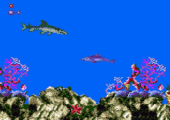
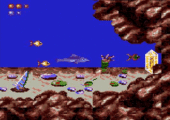
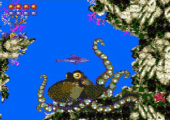
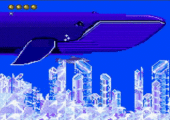
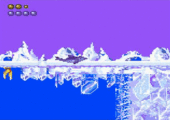
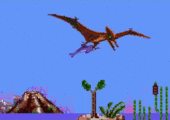
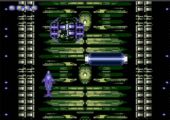
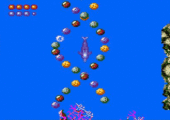
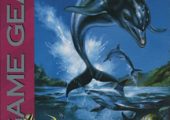
Recent Comments